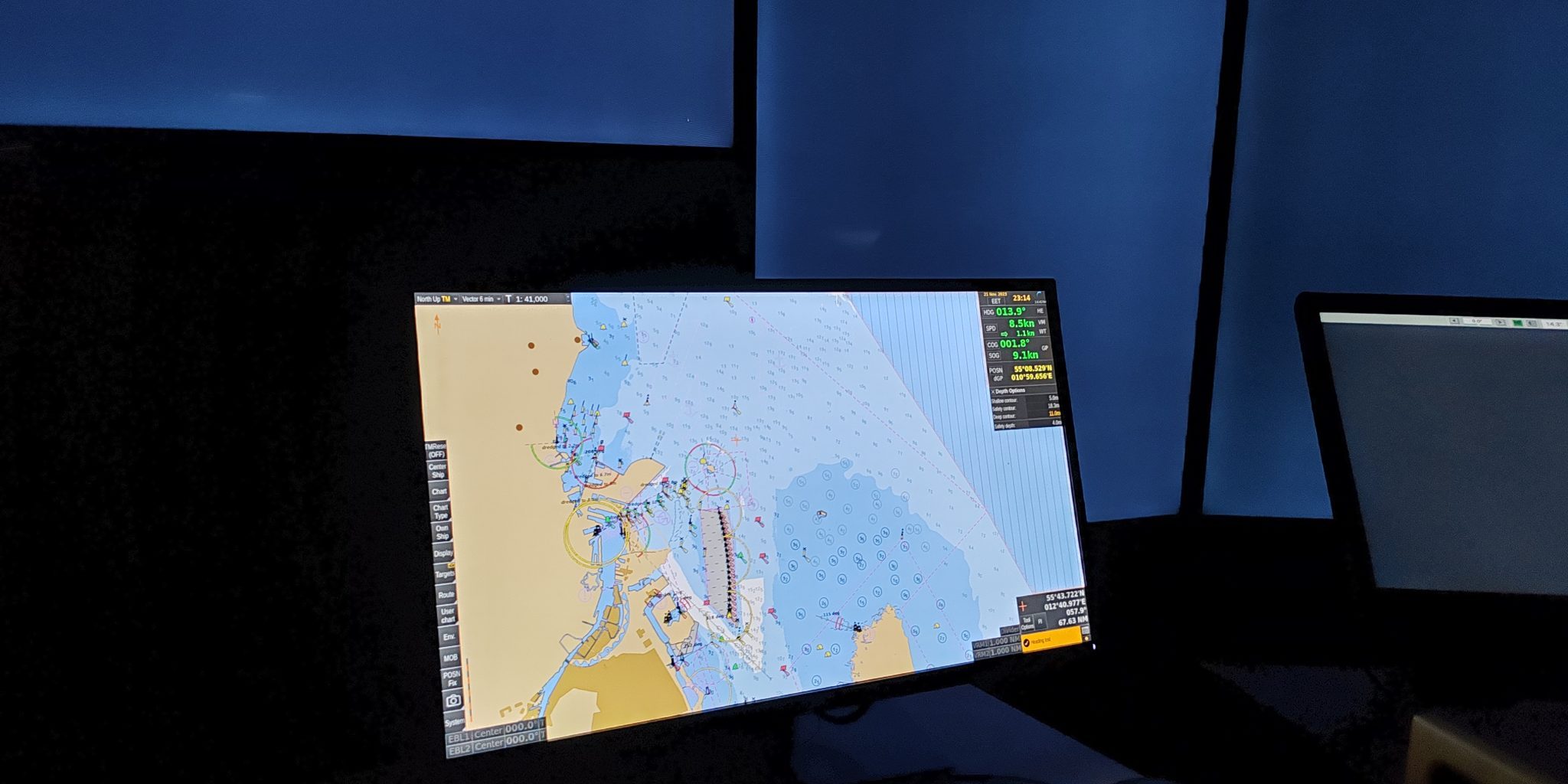We research: Navigating Innovation: Baltic Sea e-Nav’s S-100 Pilot Testing Takes Off
The Baltic Sea e-Nav project is gearing up to begin pilot testing of the first series of products in the s-100 series this spring, the pilots are carried out by the users who will be utilising the products in the real world. The pilots will be carried out at our maritime simulators in Rauma.

To successfully pilot the new S-100 products, a navigation system needs to be developed. Furuno, one of the leading companies in the business, is responsible for developing and integrating the navigation system prototype, ensuring its compatibility with S-100 products and providing technical support throughout the testing phase. On January 28th, 2025, the first version of the navigation system prototype was installed in SAMK’s simulator premises. Initial products from hydrographic offices were loaded, and first visual inspections were carried out by a team of experts.
Visual inspection results were reported forward to relevant stakeholders to support further development and refinement of the prototype and the products. Visual inspections and refinements will continue in an iterative feedback loop. Initially, the focus will be on visual inspections, followed by deeper engagement in system usage and end-user experience. After piloting, feedback from end-users will be collected and provided to producers, ensuring continuous refinement and enhancement of the products.
This approach ensures a more realistic simulation of real-world conditions, where unforeseen challenges and practical use cases emerge naturally. By involving actual end-users, developers gain a better understanding of real-life functionalities, allowing refinement of the system in ways that align with operational needs rather than just theoretical performance.
End user-pilots also provide valuable insights into the real-world functionality. That will ensure, that the final products are both technically sound and user-friendly. Their diverse operational experiences also help tailor the solutions to various vessel types, routes, weather conditions, and regulatory environments in the Baltic Sea. Testing with real pilots further ensures compliance with practical operational requirements as well as industry regulations.
